
Forumtorget is now open, with the full bench completed.

Forumtorget is now open, with the full bench completed.
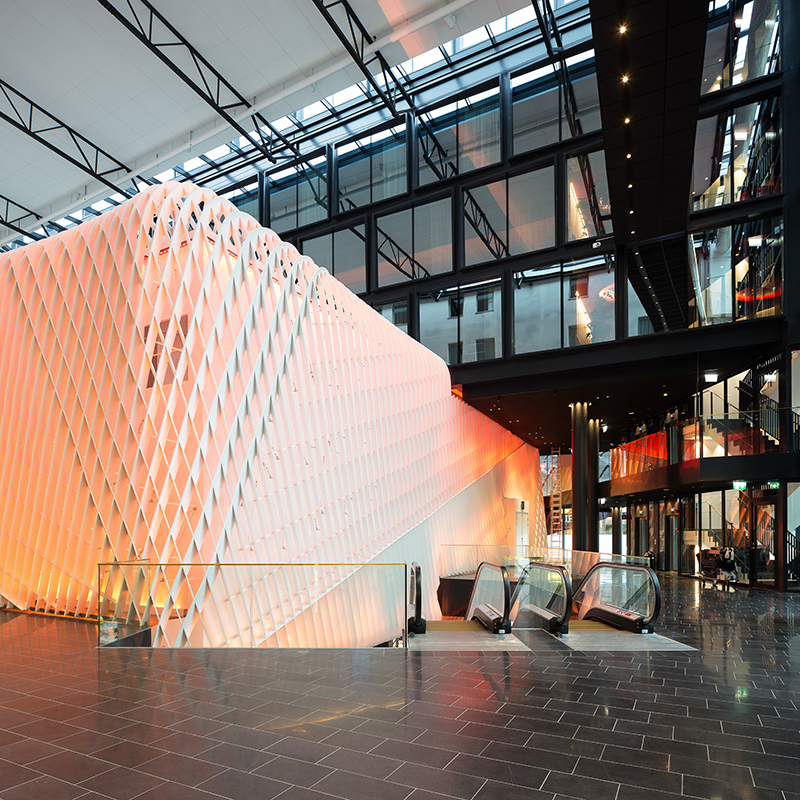
As part of the extension of the Quality Hote Globe, Dsearch developed an interior cladding system for the main banquet hall, that also forms the ceiling of the main foyer area. Development ranged from initial concepts to design, fabrication and assembly. Dsearch development team: Sander Shuur, Jonas Runberger, Hama Agahimeybodi and Pedram Seddighzadeh Yazdi.
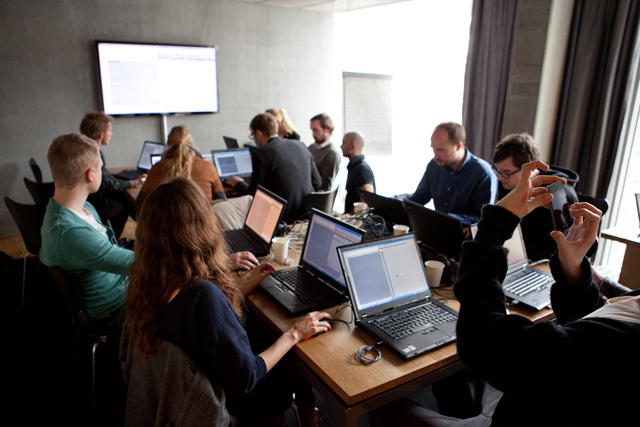
The first of three workshop days that will introduce digital design strategies and parametric thinking to Associates of White & Partners was facilitated in March in the Stockholm office. 25 participants from six different White offices took part, and will through the spring try out a number of digital tools while developing small design proposals within teams. The projects will explore parametric design thinking, analytical techniques and fabrication. The workshop is organized by Dsearch in collaboration with White R&D Building technology (Kunskapsbygget Byggteknik), with financial support from the ARQ Research Foundation.
In the second project of studio 11 in the fall 2010 our students were asked to deploy the techniques for digital design as well as structural and environmental analysis in the design of a visitors´centre for the Högdalen Energy from Waste power plant. This involved a basic understanding of the programmatic requirements of the facility and the added functions, as well as the development of a design strategy for industrial sites. This assignment also introduced the theme of the year, as the spring will see the design of new Energy from Waste facilities in three different sites around Stockholm.
Beside all tutors of the studio; Hanif Kara, Paul Scott, Reuben Brambleby, Lina Martinsson Achi and myself, we also had our assisting tutors Alexander Trimboli and Raimo Joss, and invited guests Helena Jarlöv Glantz and Sander Schuur in for the review. A great ending of the first intense semester of the new studio.
More about the studio here: https://www.kth.se/social/page/architectures-of-interdiscipli/
A number of studies to solve the rotational problem, this seems to be a plausible solution. Compared to earlier studies, in this alternative the vertical leg is tapered. THe preferred alternative is here a thinner leg a the bottom. This will be tested in the workshop next week.
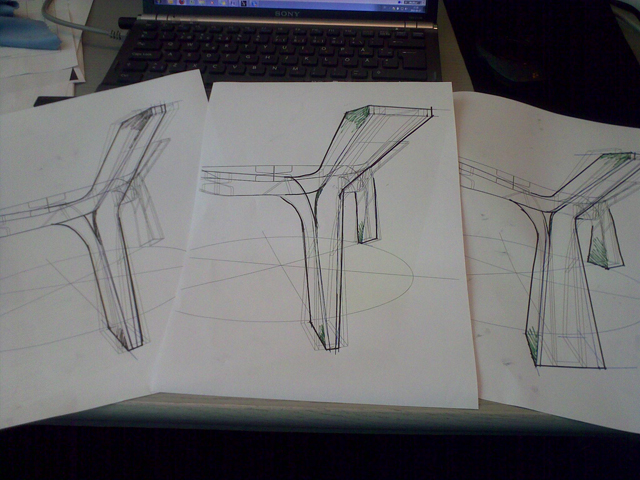
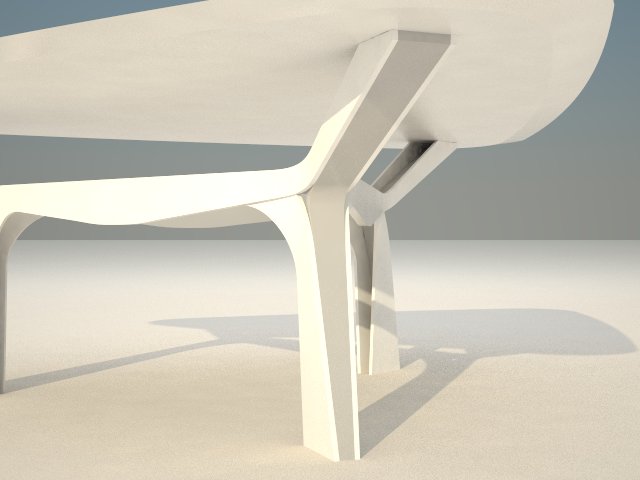
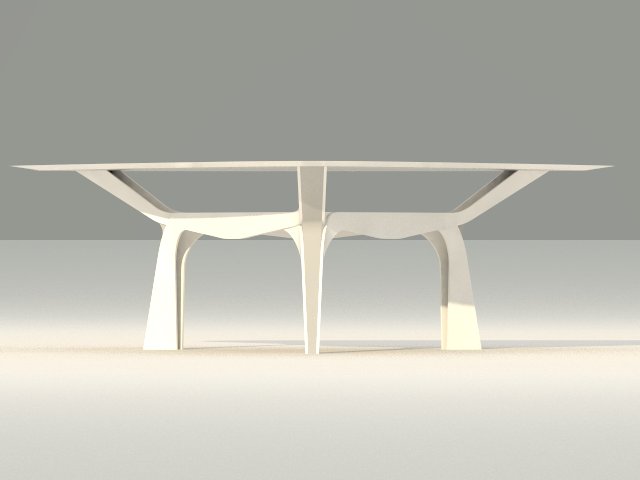
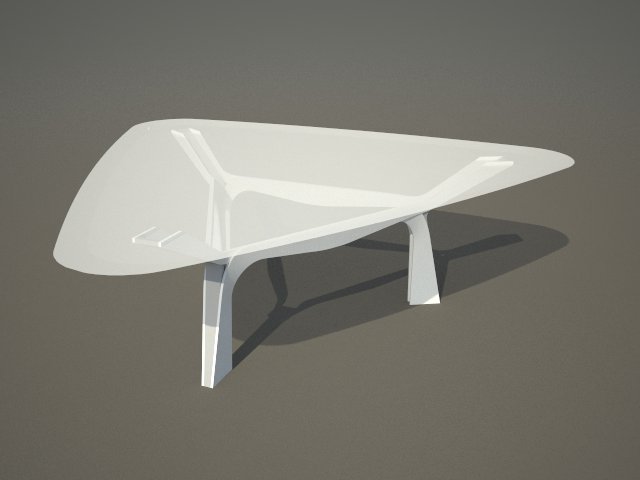
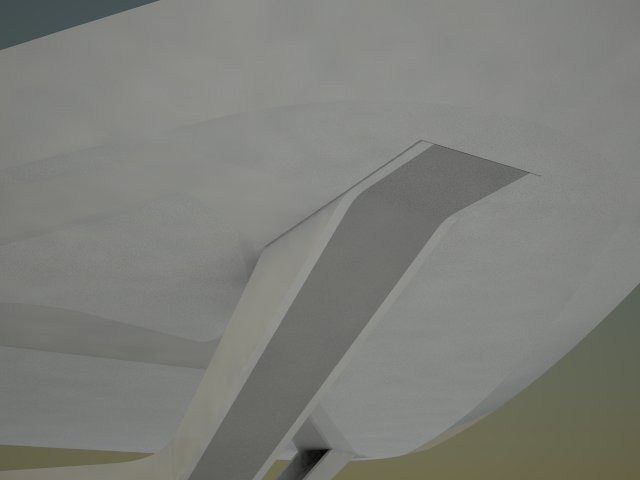
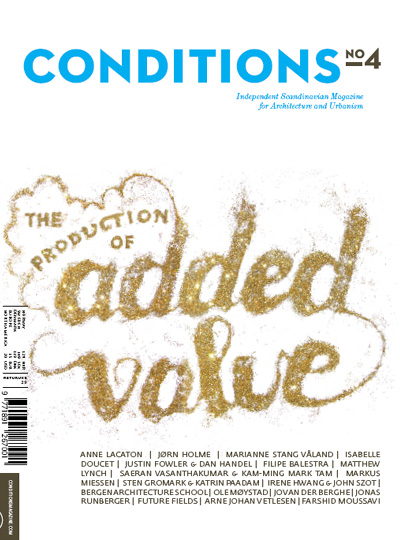
Article published in Conditions # 4: THE PRODUCTION OF ADDED VALUE , 2010
This issue of CONDITIONS is an investigation into the production of added value in architecture. The economic crisis has put architecture under increased pressure. Everybody wants “more for less” from architecture. The promise of “more” is everywhere in the world of architecture. Architects are in danger of getting reduced to mere service providers, unless they are able to increase the ambition beyond the given assignment.
Abstract:
The past 15 years have seen an open-ended, innovation driven development in the field of digital design in architecture, where the current ambitions are focused on fabrication and production. In many ways this is concluding a phase of free exploration by proving that things before envisioned can be actualized as built work. In parallel, the discourse has targeted critical practice, suggesting its replacement with projective practice, and design intelligence has been defined as a mode of operation that allows innovative architecture in a commercial arena. Recent attempts to conjecture a heterogeneous discourse into a collective manifesto, as well as a regard of the first decade of this century being characterized as “un-serious” in its formal approach, has been answered by critical voices that suggest that this trajectory of architectural development is superficial, internal, self-absorbed or even subversive.This text is investigating the shifting field of digitally based design within architecture, and its recent turns, including internal discourse, external debate, and samples of especially potential design. It suggests that we need to multiply our agendas and combine techniques with agency. This needs to be supported by the establishment of new conceptual tools that incorporate digital techniques, the notion of the parametric and the potential of network practices in order to step up to the challenges of the future while building on the recent past. The text is illustrated by the work of Elliot Krause, Diploma Unit 16 2010.
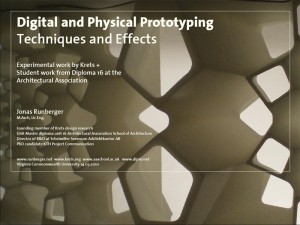
This lecture introduced notions of digital and physical prototyping as techniques and effects as an introduction to a five day workshop exploring parametric principles and Islamic patterns. Examples from contemporary built architecture suggested how this field is expanding into practice, and the experimental work of Krets as well as selected student projects from AA Dip16 provided in depth ideas of different approaches. As the curriculum at Virginia Commonwealth University in Doha covers interior design, fashion and graphic design, a particular focus was given on small scale and installation work.
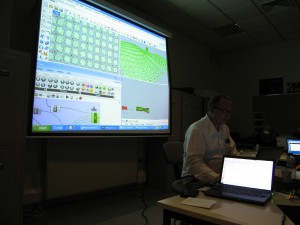
This short but intense workshop at the Virginia Commonwealth University in Doha was looking at parametric adaptation of Islamic patterns. It was conducted as team efforts, with students and teachers collaborating on projects in different scales. Rhinoceros and Grasshopper were introduced as the working platform, and the projects explored how a contemporary view of patters could be implemented in terrain, furniture or product scale. Facilitated over five evenings, the teams managed to both get a basic understanding of parametric principles, and deliver project outcomes. I was invited by assistant professor Johan Granberg, teaching in the department of interior design, but the participants came from several departments including fashion and graphic design.
Abstract:
As the agenda of many digitally driven practices has shifted to physical fabrication and full scale production, this paper suggests that new conceptual layers need to be integrated into the design agenda. Throughout the field, architects are formulating conceptual frameworks for future development, often defined by aesthetic identity or fabrication principles, and in some cases full manifests for implementation of parametric principles in all scales of the built environment are stated. I would argue that there may be alternate ways of widening the scope of experimental digital practice by looking at fields outside of architecture all together, and I suggest that one such field is literature, in particular Science Fiction. Rather than seeing the possibility of rational fabrication as the only motivation for the full implementation of recent digital explorations, or considering the digital design field mature enough for the establishment of a common manifest, this line of thought suggests a more open framework, situated between technology and utopian thought. By looking at a number of concepts identified within Science Fiction theory, the paper proposes that a design approach in analogy with the way an SF author designs worlds to be explored through a narrative, could be a fruitful way forward as the digital design field risks either an introverted discourse or a mundane application.
Unpublished paper
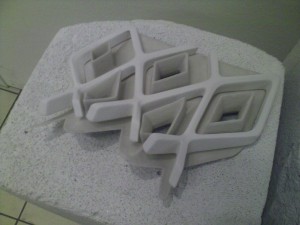
I was invited to the final review of the Perfromative Design studio, a 4th and 5th year studio at the KTH School of Architecture. This year´s theme is Architectures of Recursion: Compounds, Contours and Colloids, with task for the semester being An architecture of the interior – connective tissue for an academic environment.
Based on the formal concepts of Compounds, Contours and Colloids, the students were asked to design a building for the Emergent Materials full scale research laboratory, a series of services including bike workshop/bike shop, small bookstore and re-use bookstore, deli and student housing / guest research housing at KTH Campus. The task was set in response to a desire to create a “living campus” for the KTH.
An additional conceptual layer was added through the notion of micro climates, defined as:
A microclimate is a local atmospheric zone where the climate differs from the surrounding area. Addressing issues of microclimates, whether they are artificial, conceptual or biological, is a way to approach aspects of environmental performance on a conceptual, programmatic and material level. Creating an ecosystem, the combined physical and biological components of an environment, a system or network of relations.
The students accomplished very well developed proposal after a very short semester, that also included a study trip to the cave dwellings in Cappadocia, and the discussions that emerged around techniques, formal strategies and the functional requirements were very rewarding.